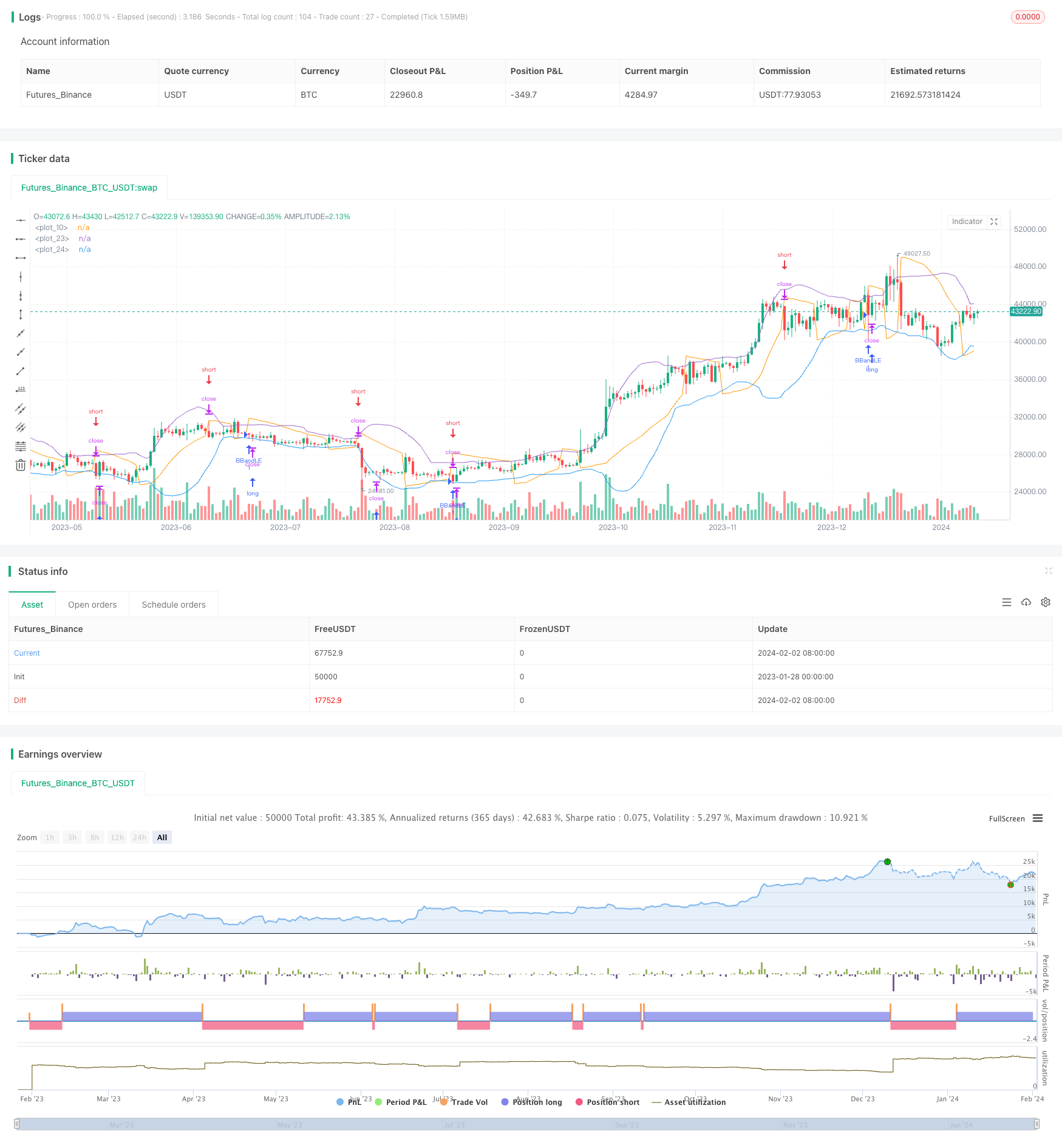
概述
双轨斜率追踪波动带策略将布林带指标和PSAR指标结合使用,在突破布林带下轨做多的同时,当PSAR指标转头向下时做空,实现更准确地捕捉趋势的转折点。该策略旨在在股价处于上升通道时捕捉多头机会,同时在股价开始下跌时及时切换做空,以实现双向交易。
策略原理
该策略首先计算布林带的上轨、中轨和下轨。中轨线为N天收盘价的简单移动平均线,上轨线和下轨线分别为中轨线正负k倍标准差。然后计算抛物转向指标PSAR,当其由上向下穿过最低价时,视为卖信号。
在进入多头方向时,如果收盘价低于布林带下轨则做多,同时设置止损于下轨。当PSAR转向下降并低于最低价时,做空头仓位,即信号发生反转的时刻。
该策略综合了布林带的趋势跟踪性和PSAR的趋势反转特征,既可以跟踪趋势又可以及时捕捉反转机会,做到双轨操作。
策略优势
综合多个指标,提高决策的准确性。布林带判断大趋势,PSAR判断局部调整,两者互补。
顺势而为,逆势而动,捕捉反转。布林带捕捉大趋势,PSAR提示反转机会,实现顺势做多逆势做空。
双向交易机会更多。无论行情上涨还是下跌,该策略都可以获利。
自动止损,严格控制风险。布林带下轨和PSAR作为自适应的止损位,可以减少大额亏损的概率。
策略风险
布林带扩张可能增加亏损。当市场波动加大时,布林带上下轨间距离会放大,造成止损点过远,从而增加亏损风险。
PSAR参数设置不当可能错过反转。PSAR的看涨看跌参数需要谨慎设置,否则可能漏掉价格反转时机。
交易次数可能过于频繁。PSAR对小范围波动过于敏感,可能造成增加不必要的交易,增大交易成本。
策略优化
优化布林带参数,适应市场变化。可以通过测试不同的布林带参数组合,选择最优参数,使布林带更符合不同市场环境。
结合其他指标滤波假信号。可以增加类似KDJ等指标判断多空,避免因PSAR参数不当造成的错误信号。
优化交易策略,减少不必要交易。可以通过设置最小止盈止损幅度,避免小幅震荡引发反复小额交易。
总结
双轨斜率追踪波动带策略充分结合布林带的趋势跟踪特征和PSAR的反转识别能力,实现了多空双向交易,顺势而为,逆势而动。相比单一使用某个指标,该策略可以大幅提高决策的准确性,在降低错误信号的基础上,增加正确的交易机会。通过参数优化和组合其他指标,可以进一步增强策略的稳定性和profit因子。
//@version=3
strategy(title="Bollinger + sar", shorttitle="Bollinger + sar",
overlay=true)
start = input(0.02)
increment = input(0.02)
maximum = input(0.2)
psar = sar(start, increment, maximum)
plot(psar)
source = close
length = input(20, minval=1)
mult = input(2, minval=0.001, maxval=50)
basis = sma(source, length)
dev = mult * stdev(source, length)
upper = basis + dev
lower = basis - dev
plot(upper)
plot(lower)
if (lower >= low)
strategy.entry("BBandLE", strategy.long, stop=lower, oca_name="BollingerBands", comment="BBandLE")
else
strategy.cancel(id="BBandLE")
if (psar <= low)
strategy.entry("BBandSE", strategy.short, stop=psar, oca_name="BollingerBands", comment="BBandSE")
else
strategy.cancel(id="BBandSE")